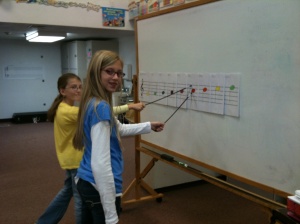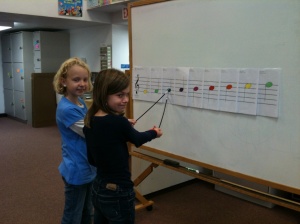by Stephanie K.
When we make learning fun, we get a better response from our students, and what better way to do so than by incorporating games into the lesson plan? I think we have all witnessed it firsthand; students become eager to participate the second you add a game to the learning mix. I have personally observed how just the use of the word “game” can get a positive and enthusiastic response from students. Games are exciting to children; thus, they can add excitement to the lesson. Games can change students’ entire attitude about learning. It is as though they no longer realize they are learning; they are just having fun. Yet, they are likely learning even more than they would have otherwise, and the bonus is that comprehension and retention are usually better, too.
I am not promoting games for the sake of games. We need to make sure that we are getting the most out of the games we use in class. We need to use games that are more than just games for the sake of playing games and having fun. Those can be saved for the playground. We need games that actually help teach and reinforce the music concepts we want our music students to learn. We need “educational” games. In my almost three months of teaching general music, I have found a resource that provides such games.
The Music Zone and The Music Zone 2 by Cristi Cary Miller are wonderful additions to any general music curriculum. Each book includes music, lyrics, and a CD of original songs that help teach the basics of music. The musical concepts in each book are accompanied by a fun game or activity for reinforcement. I have already tried several of these games and activities with my 1st through 4th grade students and have seen tremendous improvement in their basic knowledge and understanding of the concepts and their retention of the material from week to week. I only see my general music students once a week for a thirty minute period, so every minute counts. When the students remember the material from the week before, it saves the time that would normally be spent re-teaching the previous week’s material. It also allows you to cover more material throughout the school year. I think we could all use more of that.
The best example I can give you of the books’ effectiveness is this personal story: I used the songs “Swingin’ Lines and Spaces (Music Staff)” (p. 41-42) and “Music Box ABC” (p. 22-23) and the suggested games that accompanied both songs at the beginning of the year with my third and fourth graders. The games were called the “Giant Staff Relay Game” (p. 43) and “Swat a Note” (p. 24), both from The Music Zone. Both songs and games were meant to help students learn and understand the treble clef line and space notes. After using the songs and, more importantly, the games for a couple weeks, I had my students take a note test. I was pleasantly surprised when 134 out of 166 students earned a 100% on their first attempt. That was almost 81% percent with a perfect score. This number even included the special education students that are mainstreamed into my music classes. To say the least, I was very happy with those results. So, it basically all comes down to this…
Children of all ages love to play games. When you add learning to the mix, it is a bonus. I would encourage all music teachers to use such “educational” games in the classroom. But, sometimes it is hard to find specific games or activities to supplement the music lesson you are teaching. Well, I believe these books are a good start. The books together cover most of the music topics and concepts you would want to cover with your 1st through 6th grade general music classes. So, the next time you are searching for an educational game to use in your music classroom or to supplement your lesson plan with, look no further. For only $29.99 each book, it is the solution you need and a resource too good to pass up.
Some of my students playing “Swat a Note” from page 24 in The Music Zone.

Miller, C. C. (2008). The music zone. (p. 48). Milwaukee, WI: Hal Leonard Corporation.
Miller, C. C. (2010). The music zone 2. (p. 64). Milwaukee, WI: Hal Leonard Corporation.


Dec 05, 2011 @ 04:29:19
I couldn’t agree with you more how effective playing a “game” is for teaching and reinforcement. Students are highly motivated and of course, learning should be fun! I will check out these books. Cristi Cary Miller is a reputable author as well. Two favorite games that my students enjoy is the “memory game” where they match music vocabulary words to their meaning, or they can match notes on a staff to the note name. The second game is an oversized dice that I make from a big cardboard box. Each side has a music note with a different number value. This is a short game where the students get points for the the note value they roll. Rests deduct points. We play half the class vs. the other half. They have a wonderful time. This could be played in a small group as well as a center activity.